Art World
Upcycled Uptown: Hermès Gets a Pop Art Makeover For Petit H
Creative director Godefroy de Virieu and artist Lucia Hierro detailed its New York takeover.

Last week the Hermès Maison—that’s the French luxury brand’s sprawling refurbished townhouse in Manhattan’s Upper East Side—was in the midst of a transformation. ‘Petit h’ was setting up shop for a temporary ground-floor takeover. For the unfamiliar, Petit h is the elite squad within Hermès that uses the leftover luxury scraps (a bag handle here, some broken porcelain there) to create fabulous one-of-a-kind objects. It’s an eco-conscious affair, and the range of bric-a-brac created is united by sky’s-the-limit imagination and the heritage house’s peak savoir-faire. It’s a high-fashion Santa’s workshop that combines the house’s myriad métiers.
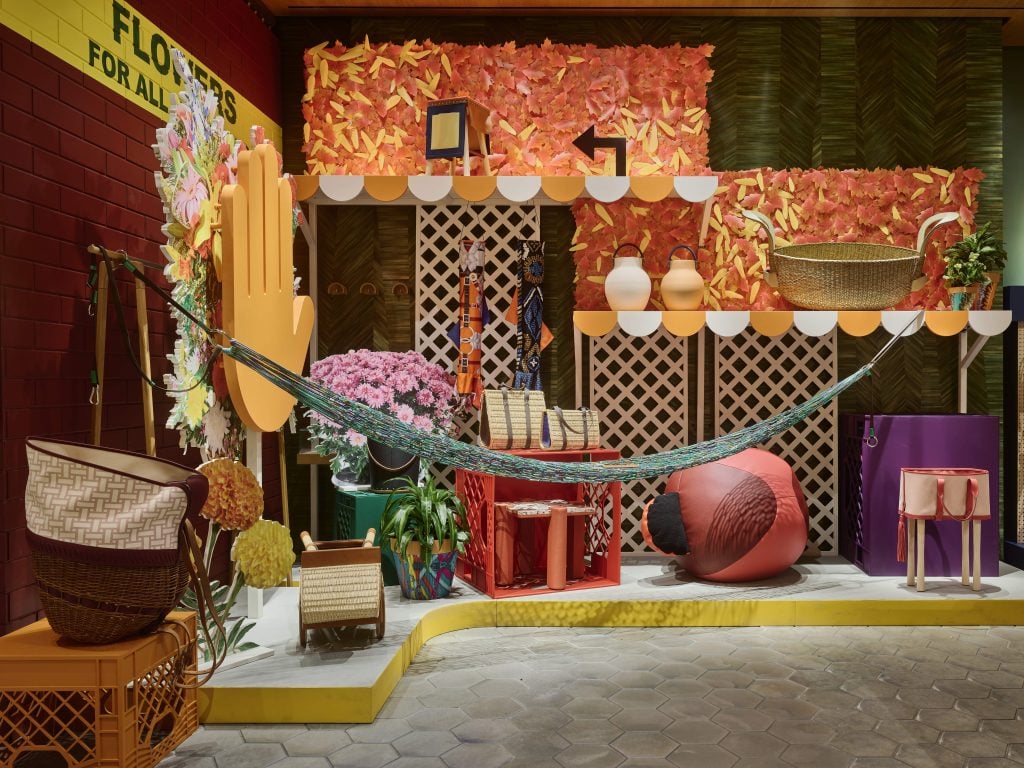
The Petit h installation. Photo: Frank Oudeman. Courtesy of Hermès.
The exhibition runs until October 26, and Godefroy de Virieu, the creative director of Hermès’s Petit h atelier was on hand for the install. “Every day is a surprise,” he said. “It all starts with the materials. We don’t have preconceived notions.” On offer is a glamorous hodgepodge of fantasist repurposed luxury: a hammock made from the brand’s iconic printed silk scarves; fine leather bento boxes; an enthralling yellow dining table made from a mosaic of broken porcelain; a terracotta vessel with the handles from an in-demand Kelly bag—why not?
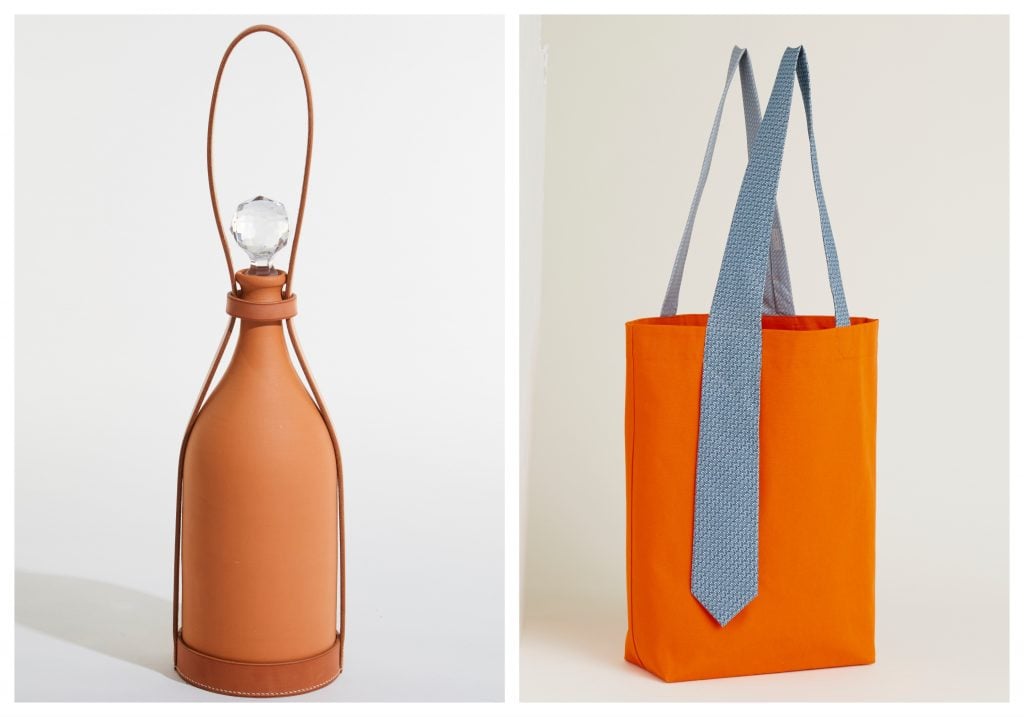
Hermès-petit h, Carafe in terracotta crystal and cow leather and Bag in canvas and silk tie Photos: Eugenia Sierko, courtesy of Hermès.
“We are really free and we have time to think about new things,” De Virieu said. “We don’t need to follow fashion or the themes of Hermès.” We walked over to a table displaying candleholders that meld terrazzo and crystal. “This is a very particular technique that was invented in France in the 19th century using concrete to make outdoor furniture,” he said of them. This method was employed elsewhere to make sinuous curvilinear mirrors.
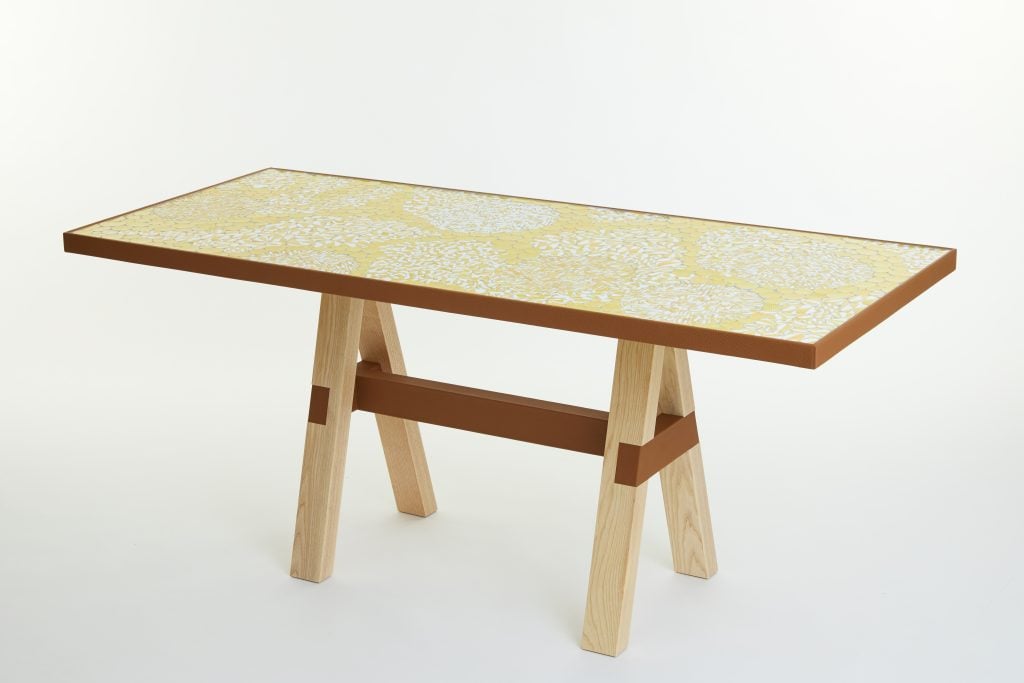
Hermès – petit h, Mosaic trestle table. Photo: Eugenia Sierko, courtesy of Hermès.
The scenography and window installations are courtesy of Dominican-American artist Lucia Hierro, who channeled a Pop Art-inspired cityscape. Hierro has made a name for herself with her oversized egalitarian representations of supermarket goods. Her art is in the permanent collections of institutions including the Guggenheim and the MFA Boston. “A lot of my work deals with capitalism and colonialism and all these really heavy topics,” she said. “I’ve always invited the viewer to grapple with these ideas in a way that feels enticing. The art brings you in in a friendly way, and then it’s like, here are these hard truths about commodity objects. But working with Hermès was a thing that I needed. It was a way for me to step back and look at the practice for the sake of playfulness as opposed to the message behind them.”
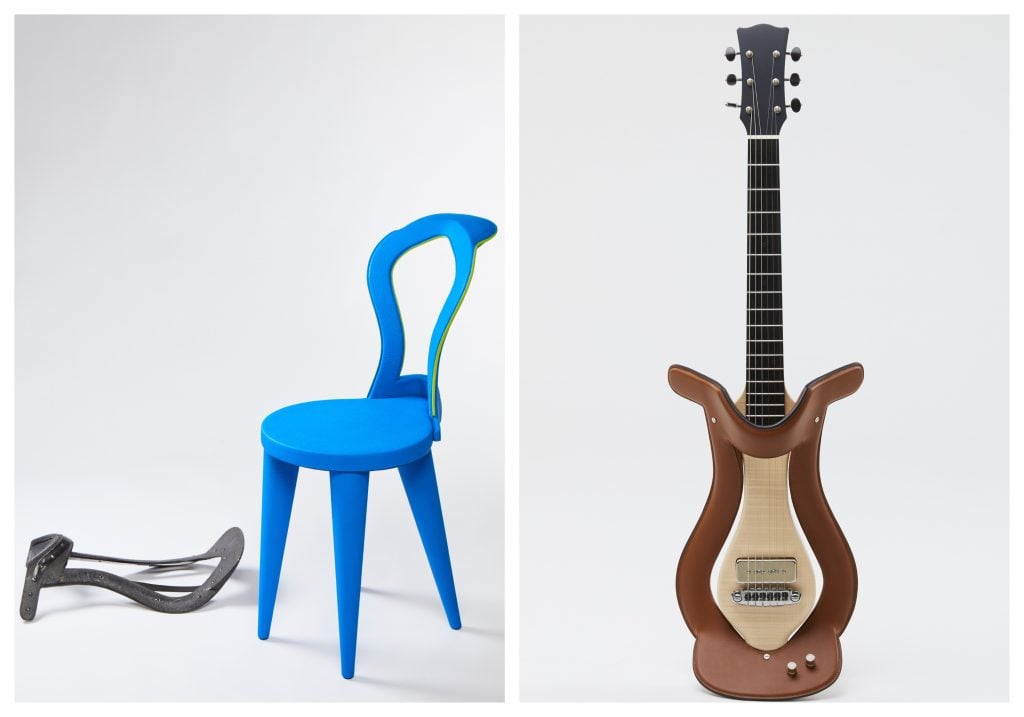
Hermès – petit h, Saddle tree chair and Saddle tree electric guitar. Photos: Eugenia Sierko, courtesy of Hermès.
For the Hermès project, Hierro supplied oversized candy-colored, oversized milk crates and plush red apples stools, as well as dry cleaning signs and other signifiers of a true New York day-to-day life. “When I started working with them, I said, here’s the thing,” she explained. “It’ll be a true collaboration with you guys. Because my New York is not Hermès’s New York, it’s not Madison Avenue. I grew up uptown, in a predominantly Dominican neighborhood. They were very respectful of that. And I said, I’m not bringing in graffiti, but I do want to bring in this idea that there are these intersections. You know, we all have to take the train. I’ve seen some of the most famous people during fashion week take a train because there’s too much traffic. What a democratic space, right?”
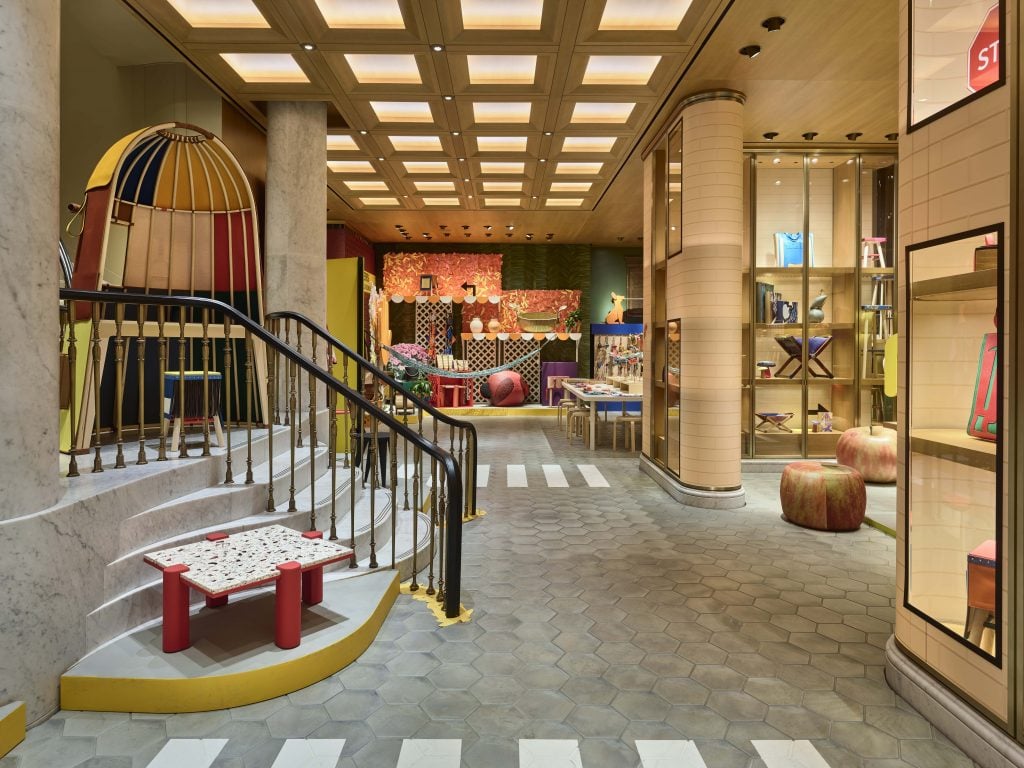
The Petit h installation. Photo: Frank Oudeman. Courtesy of Hermès.
Hierro’s set design worked well with the broadly-varied product. Her art aesthetic works on different levels, as well. “There’s many entry points to my work,” she said. “You have Dominican folks go, ‘oh my god, that’s so Dominican.’ And you have a Colombian person that’s like, ‘that’s Colombian.’ It’s just, like, this is the ethnic food aisle. And the art history folk realize that I’m working with Pop and that there’s this lineage with Pop heroes like Lichtenstein and Oldenburg.”
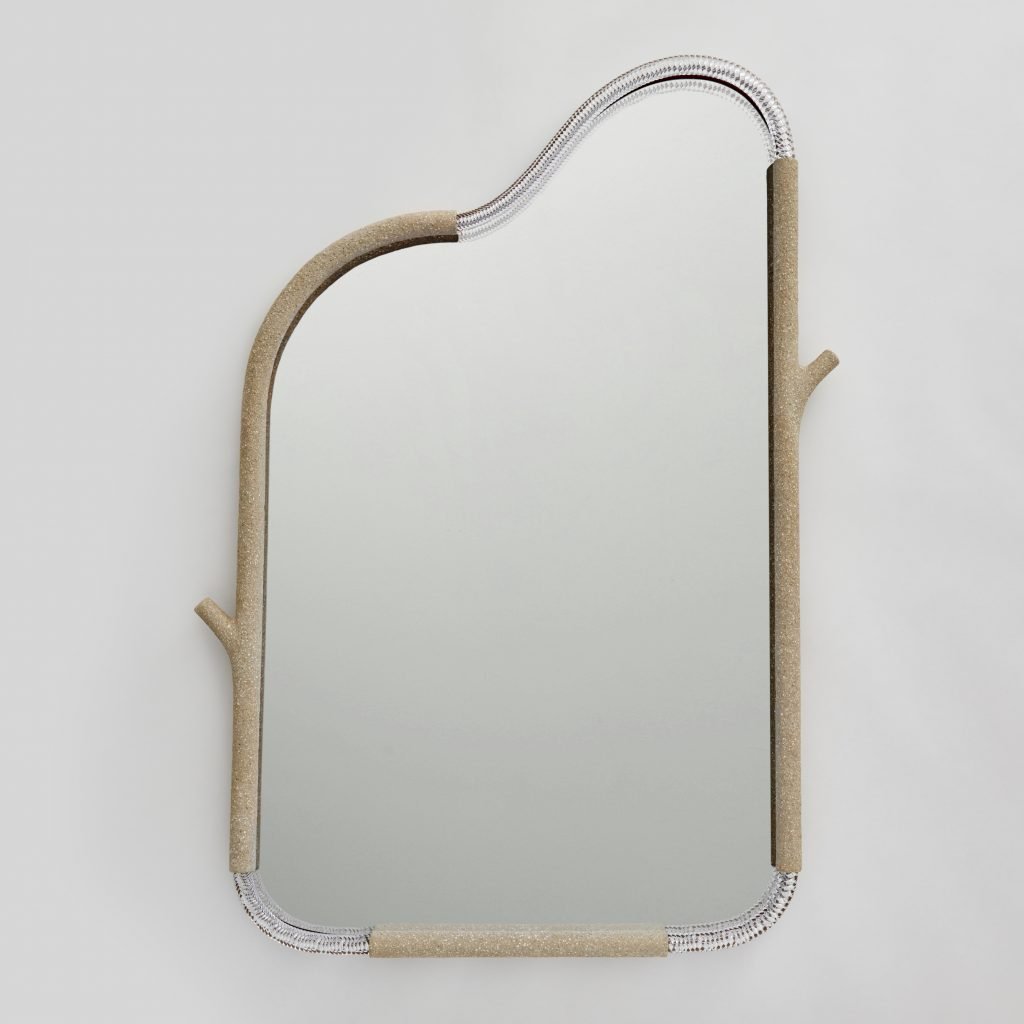
Hermès- Petit h Mirror Mortier Rocaille Crystal. Photo: Eugenia Sierko, courtesy of Hermès.
Hierro was drawn to the project through the craftsmanship element of Petit H. “There was something charming about the story, and I really connected to it,” she said. “My mom worked in factories in New York in the garment industry and in the Dominican Republic. She was a seamstress, and she grew up picking up the leftover scraps and making doll dresses.”
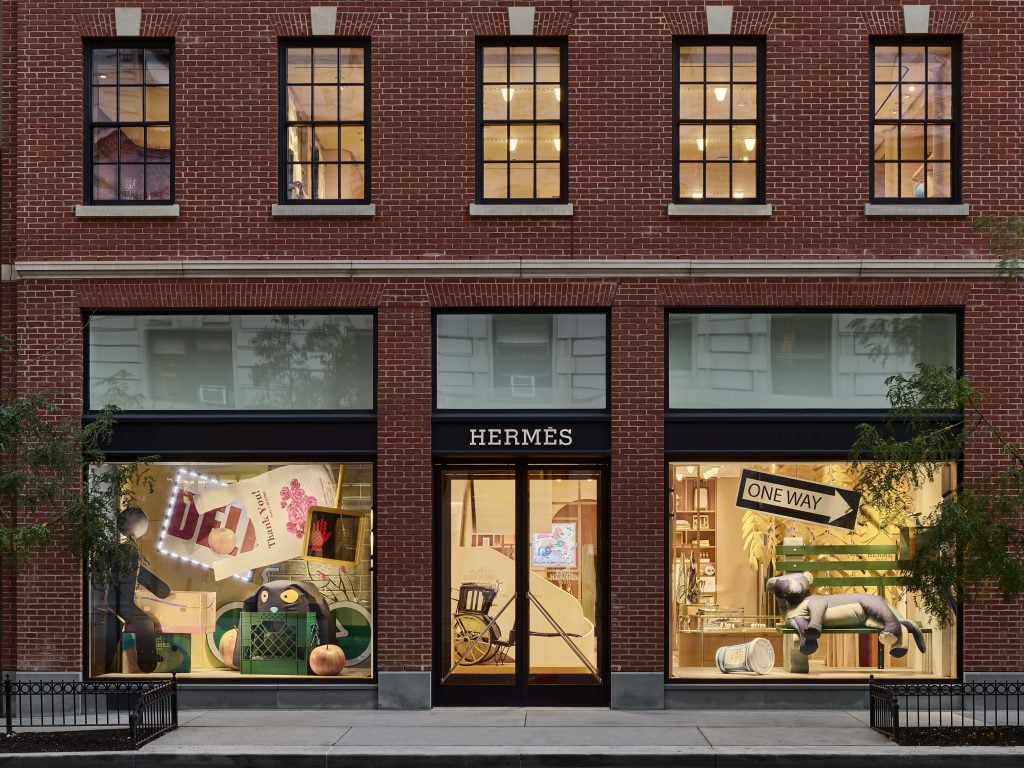
The facade of the Hermès Maison Madison. Photo: Frank Oudeman. Courtesy of Hermès.
As for De Virieu, he has worked with Petit h since its formation in 2010, and says that the experience has changed his creative outlook. “It was not my way of doing it before,” he tells me, “and now I won’t be able to work in a different way. The interesting thing about the project is that there are so many existing things that you can turn into something else, that you can twist in a joyful way. I really like transforming things, to give life to objects in a new way and to turn them into something different.”





